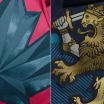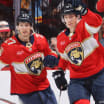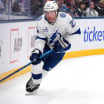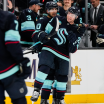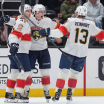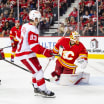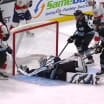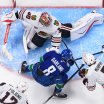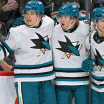The Pittsburgh Penguins have been on a dominant run for the past few months and are hoping it doesn't end against the San Jose Sharks in the Stanley Cup Final.
The Penguins, who defeated the Tampa Bay Lightning 2-1 in Game 7 of the Eastern Conference Final on Thursday, will host Game 1 of the Stanley Cup Final at Consol Energy Center on Monday (8 p.m. ET; NBC, CBC, TVA Sports).
It's Pittsburgh's fifth Cup Final appearance but first since 2009, when they defeated the Detroit Red Wings in seven games to win the Cup. But since then, even with Sidney Crosby and Evgeni Malkin, they've been as far as the conference final twice.
How Penguins got to Stanley Cup Final
Coaching change, Kessel trade, Bonino's emergence reasons for Pittsburgh's rise
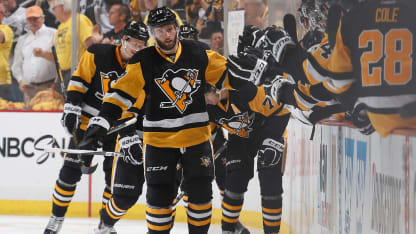
© Gregory Shamus/Getty Images
Jim Rutherford was hired as general manager prior to the 2014-15 season and has made a number of successful moves to get the Penguins within four wins of their fourth Stanley Cup title.
Among his best moves was hiring coach Mike Sullivan to replace Mike Johnston on Dec. 12, 2015. Under Sullivan, the Penguins went 33-16-5 in their final 54 games; they had the third-most wins and third-most points (71) in the League in that stretch.
Sullivan wasn't afraid to rely on rookie goalie Matt Murray, who had 13 games of regular-season experience, in make-or-break playoff games. It has paid off with a trip to the Cup Final.
Here are the moves and moments that have gotten the Penguins to the Stanley Cup Final:
BEST MOMENT: Game 6 against Washington Capitals
The Penguins knew they could play with the Capitals, having defeated them the final two times they played in the regular season. But the Capitals had won the Presidents' Trophy and were considered a Stanley Cup favorite. After losing the first game of the Eastern Conference Second Round, the Penguins won the next three. They lost Game 5, their first chance to close the series, and then saw a 3-0 lead in Game 6 evaporate. But forward Nick Bonino scored 6:32 into overtime to win the series.
TURNING POINT: Naming Sullivan coach
The Penguins were 15-10-3 following a 3-2 shootout loss against the Los Angeles Kings on Dec. 11. Johnston was fired, and Sullivan, who was coaching their American Hockey League affiliate in Wilkes-Barre/Scranton, was promoted to replace him. Sullivan gained the trust and confidence of his players and installed a system that didn't just bank on his superstars. The Penguins lost their first four games (0-4-0) under Sullivan but went 33-12-5 the remainder of the regular season, including 14-2-0 in their final 16 games. They've gone 12-6 in the playoffs to reach the Cup Final. Prior to losing Games 4 and 5 against the Lightning, the Penguins hadn't lost back-to-back games since Jan. 12 and 15.
BEST MOVE MADE: Trading for Kessel
In two seasons as GM, Rutherford has traded for forwards Patric Hornqvist, Carl Hagelin and Bonino, and defenseman Trevor Daley. But Rutherford's best move was the July 1, 2015 trade with the Toronto Maple Leafs for forward Phil Kessel. Kessel struggled trying to find his niche in the lineup, scoring seven goals in his first 23 games. But he had 19 goals in his final 59 games and carried that momentum into the playoffs, where he leads the Penguins with nine goals and 18 points. Sullivan has been able to play Crosby, Malkin and Kessel on separate lines to provide offensive depth.
BEST MOVE NOT MADE: Not reuniting Malkin with Crosby or Kessel
Malkin returned for Game 2 of the first round against the New York Rangers after missing five weeks with an upper-body injury. He had a point in each of his first six games back (three goals, six assists), but there were questions about where he would play. In Malkin's absence, Crosby had found chemistry with Hornqvist and Conor Sheary, and Hagelin, Bonino and Kessel were playing well together. Rather than break up the Crosby or Kessel lines, Sullivan had Malkin center a separate unit. After a rotating cast of linemates, Malkin settled in with Chris Kunitz and Bryan Rust. Rust scored two goals in Game 7 against the Lightning, with Malkin assisting on each. Malkin has one goal and five assists in his five-game point streak, and four goals and 15 points in the playoffs. He's been successful apart from Crosby and Kessel, which has allowed Sullivan to spread the scoring, making the Penguins more dangerous.
SIGNATURE WIN (REGULAR SEASON): March 20, 6-2 vs. Washington
The Capitals ran away with the Metropolitan Division, although they missed clinching the division on this night. The Penguins dominated, outshooting the Capitals 31-18. They took a 2-0 lead in the first period on goals by Rust and Daley. The Capitals tied the game in the second period, but Tom Kuhnhackl gave the Penguins a 3-2 lead late in the second, and they scored three times in the third period.
It was the Penguins' sixth straight win and gave them a storehouse of confidence to draw from when they met the Capitals in the playoffs.
SIGNATURE WIN (PLAYOFFS): Game 2, 3-2 vs. Lightning
This game wasn't a series-clincher, but it was arguably Pittsburgh's most defining win of the postseason. The Penguins were in danger of falling into a 2-0 hole with Games 3 and 4 to be played at Tampa Bay. Matt Cullen and Kessel scored in the first period to give the Penguins a 2-0 lead, but Anton Stralman and Jonathan Drouin scored to tie the game before the period ended. It went to overtime but didn't last long; Crosby scored 40 seconds in to give the Penguins a 3-2 win. Crosby hadn't scored in eight games, but this was the first NHL playoff overtime goal and first of his three game-winning goals in the series.
MVP: Crosby
There were questions about whether Crosby, 28, had passed his prime after he had six goals and 19 points in his first 30 games of the regular season. But he answered his critics with 66 points (30 goals, 36 assists) in his final 50 games, the most of any NHL player in the span. He finished third in the League with 85 points, tied for seventh with 36 goals and is a finalist for the Hart Trophy as League MVP. Crosby played 50 of the final 52 games, and in that span the Penguins went 33-14-5. It's no surprise the Penguins' turnaround coincided with their captain rediscovering his scoring touch.
ROOKIE OF THE YEAR: Murray
Murray was dominating in the AHL, going 20-9-1 with a 2.10 goals-against average, .931 save percentage and four shutouts in 31 games with Wilkes-Barre/Scranton when he was called up by the Penguins. His transition to the NHL could not have gone much smoother. He went 9-2-1 in 13 regular-season games, and is 11-4 with a 2.21 GAA and .924 save percentage in 15 playoff games. Veteran goalie Marc-Andre Fleury, a huge component of the Penguins' regular-season success, has been the backup to Murray since recovering from a late-season concussion. Fleury was available to resume his starting role but has been limited to two games and one start because of Murray's breakout. Murray has given the Penguins a chance to win almost every game and is a big reason they've advanced to the Stanley Cup Final.
UNSUNG HERO: Bonino
Bonino had nine goals and 20 assists in 63 regular-season games but became a critical part of the Pittsburgh offense down the stretch when he was shifted to center on a line with Hagelin and Kessel. The "HBK Line" rose to prominence when Bonino and Kessel each had a goal and four assists and Hagelin had two goals in a 7-2 win against the Detroit Red Wings on March 26. They've been together since and have continued to flourish. Bonino's 15 points are tied for second on the Penguins; he had 15 points in 30 playoff games prior to this season. In addition to scoring the series-clinching overtime goal in Game 6 against the Capitals, he had two points in the 5-2 win in Game 6 against the Lightning to keep their season alive. He has at least one point in 12 of 18 playoff games.


